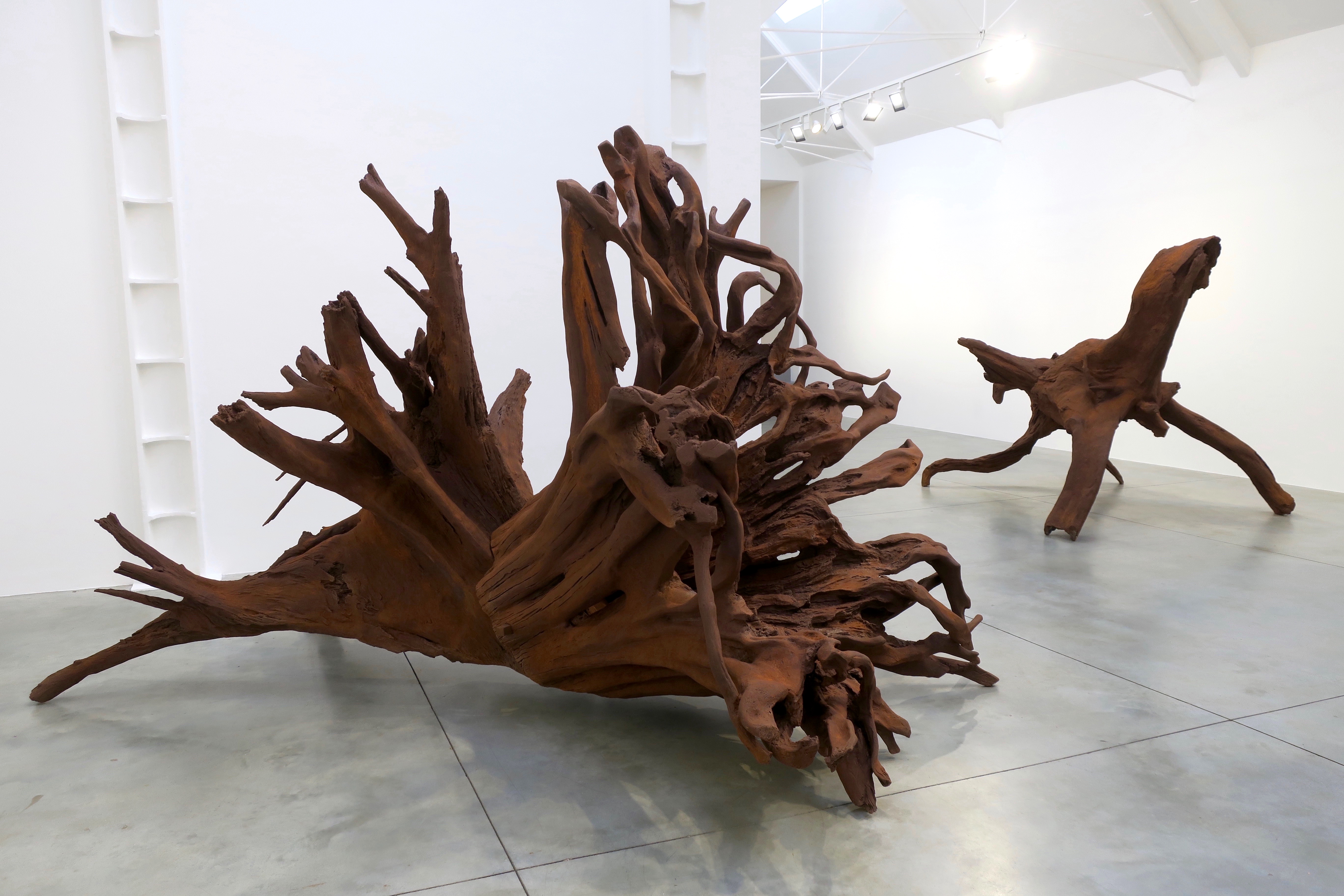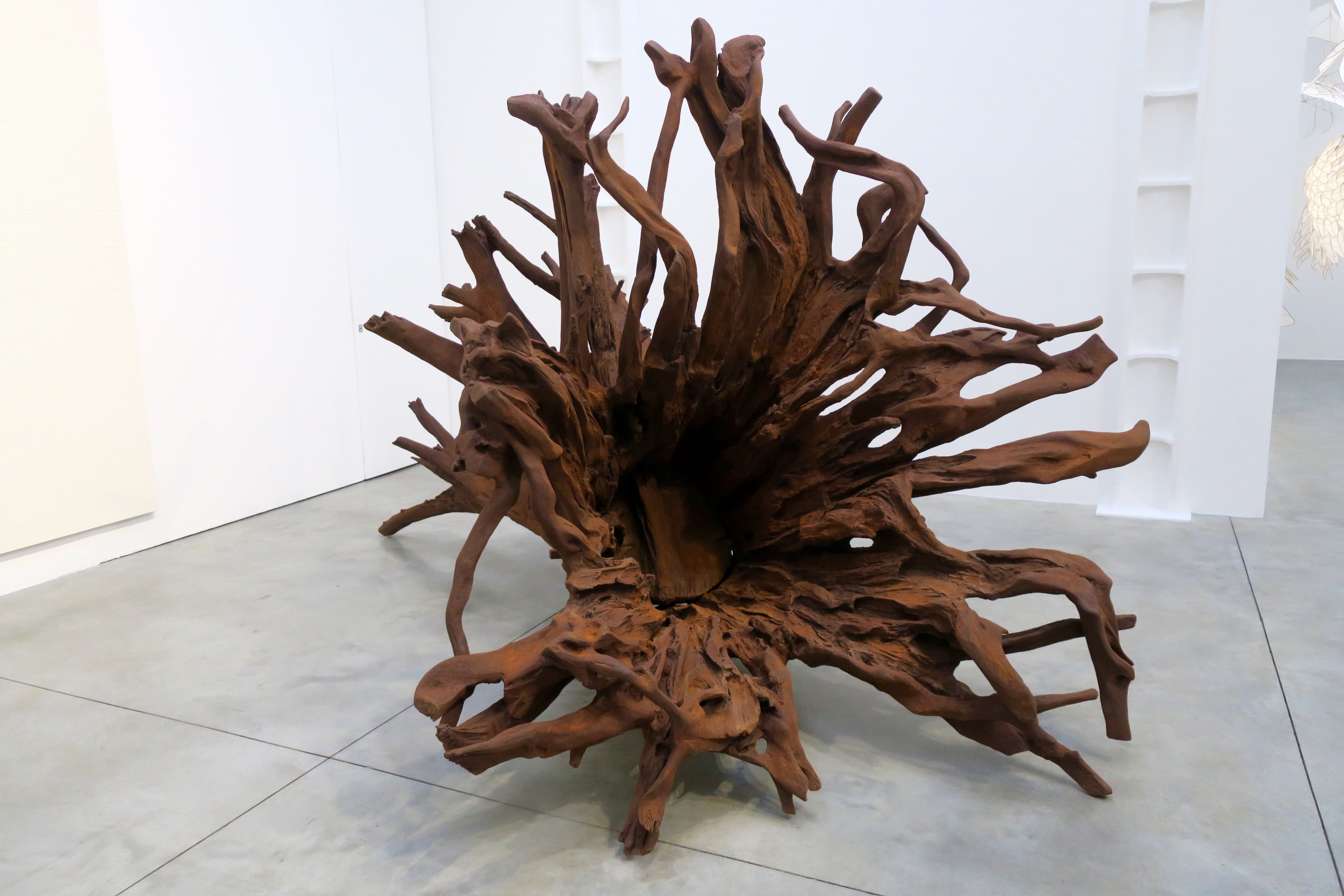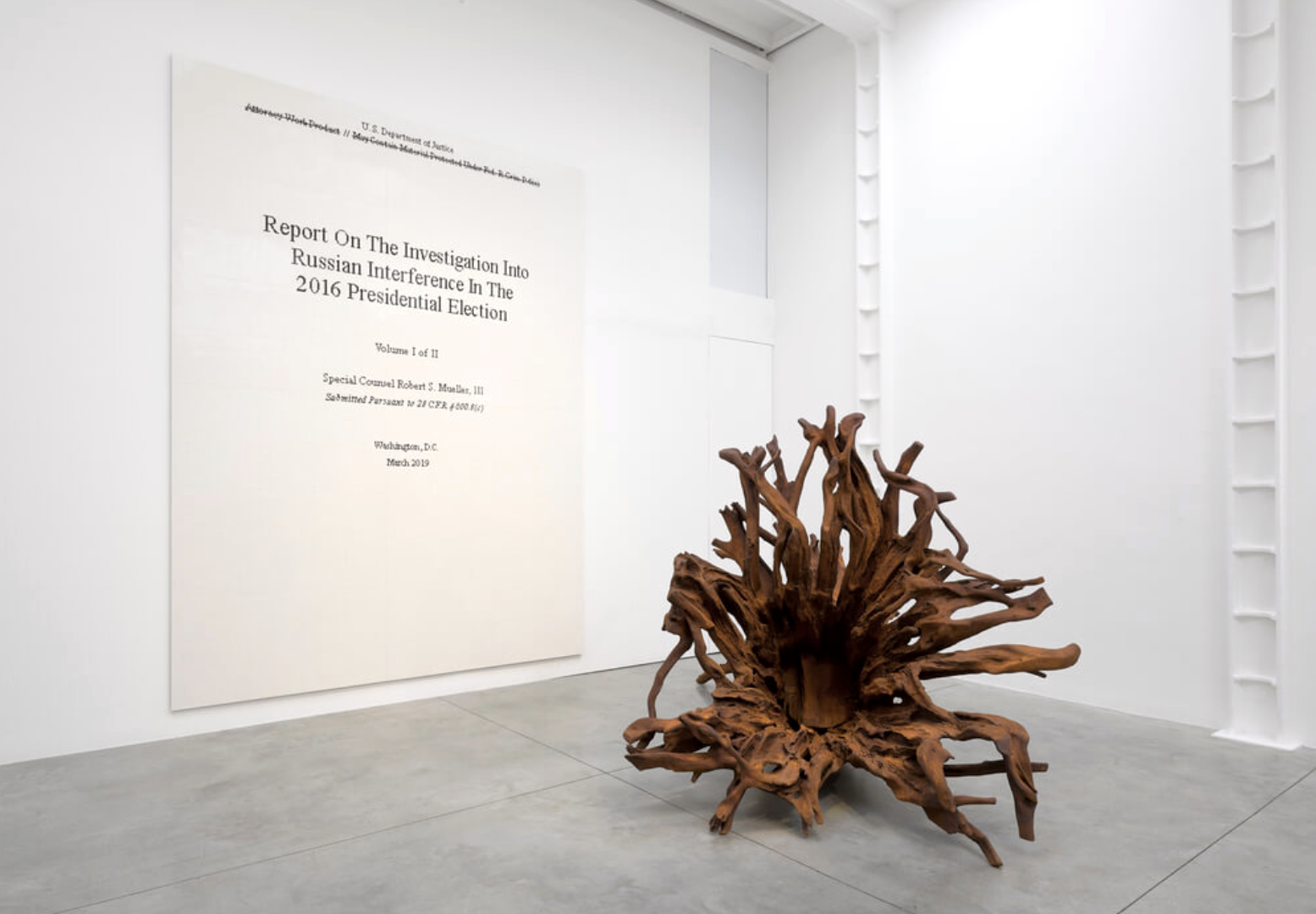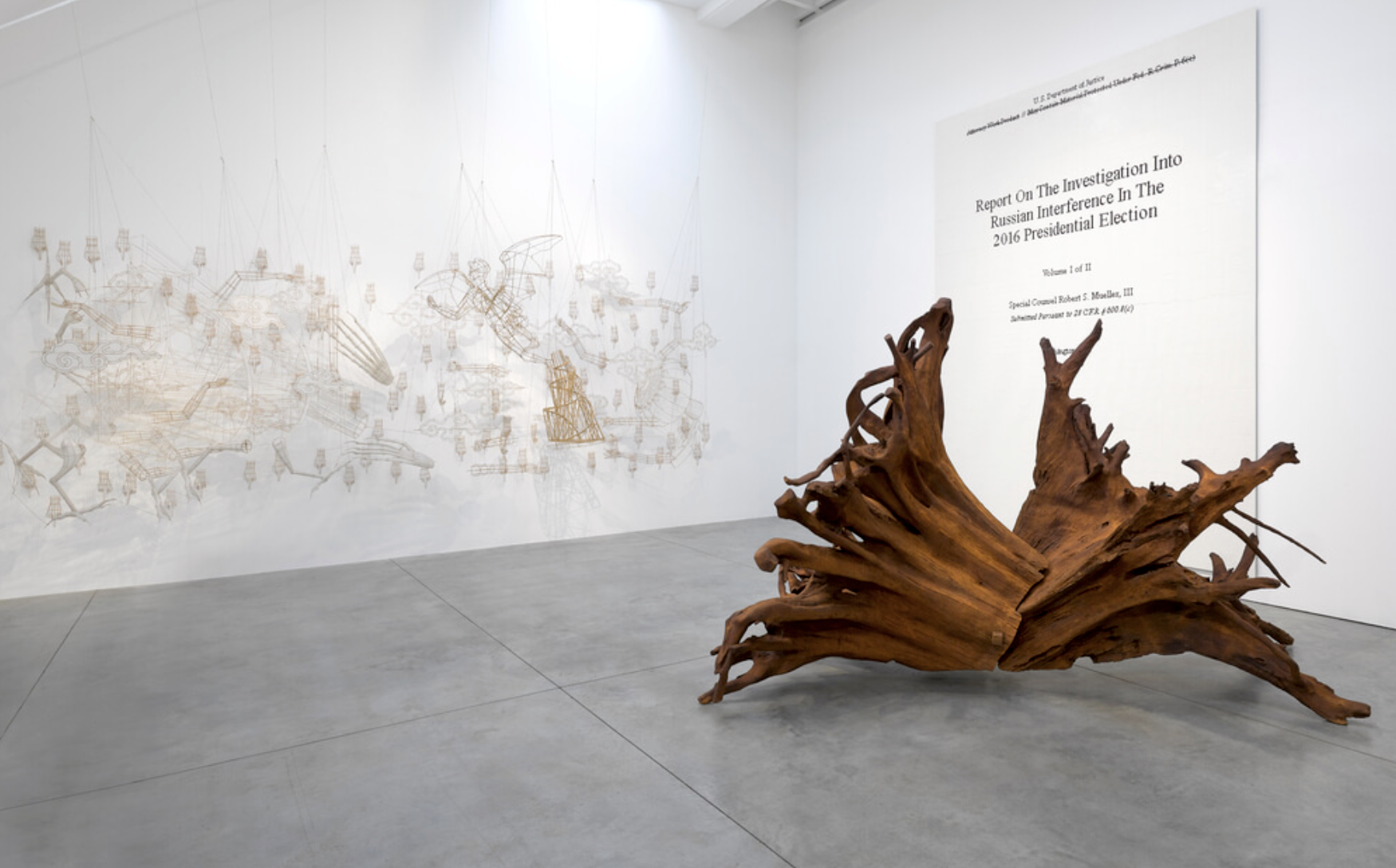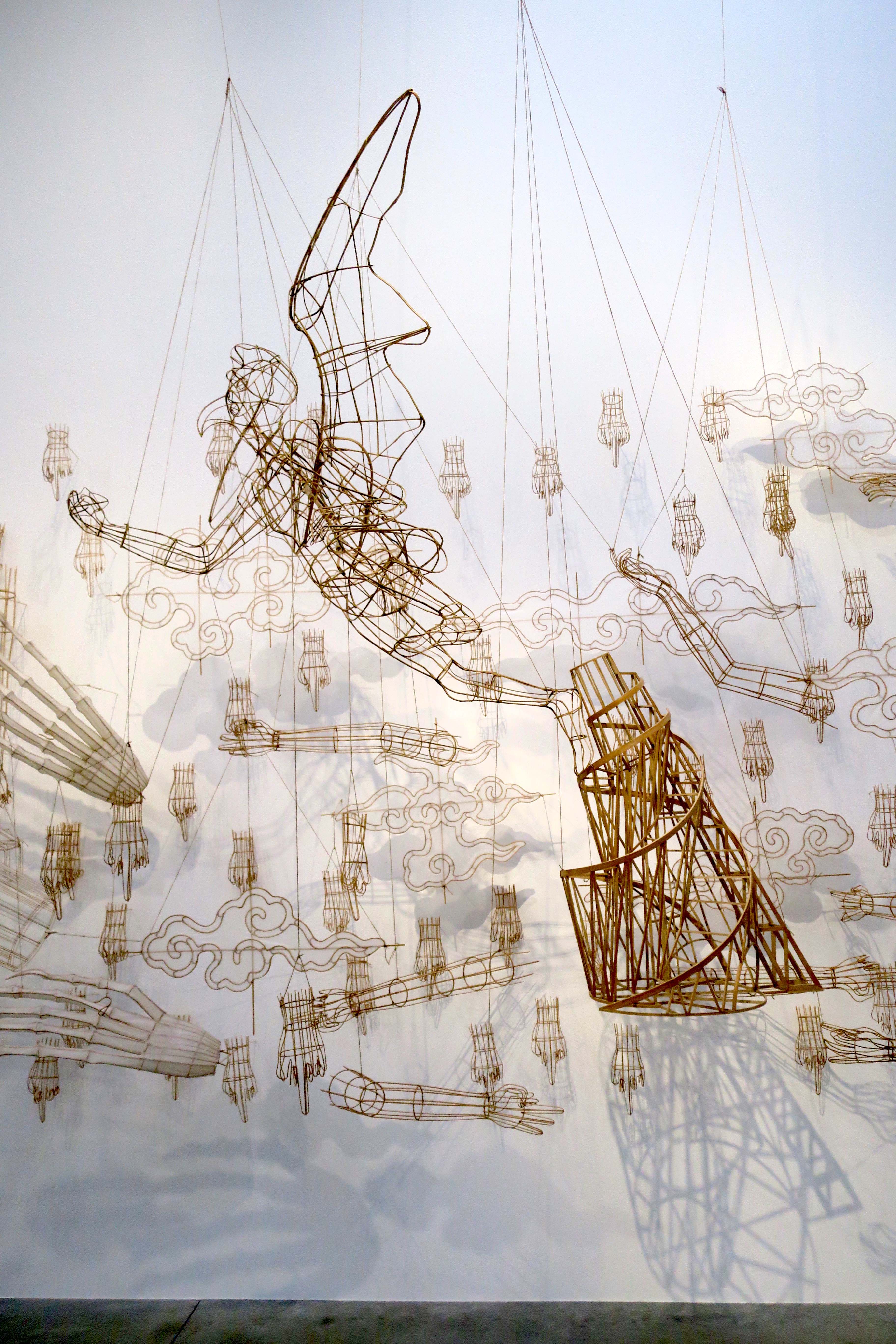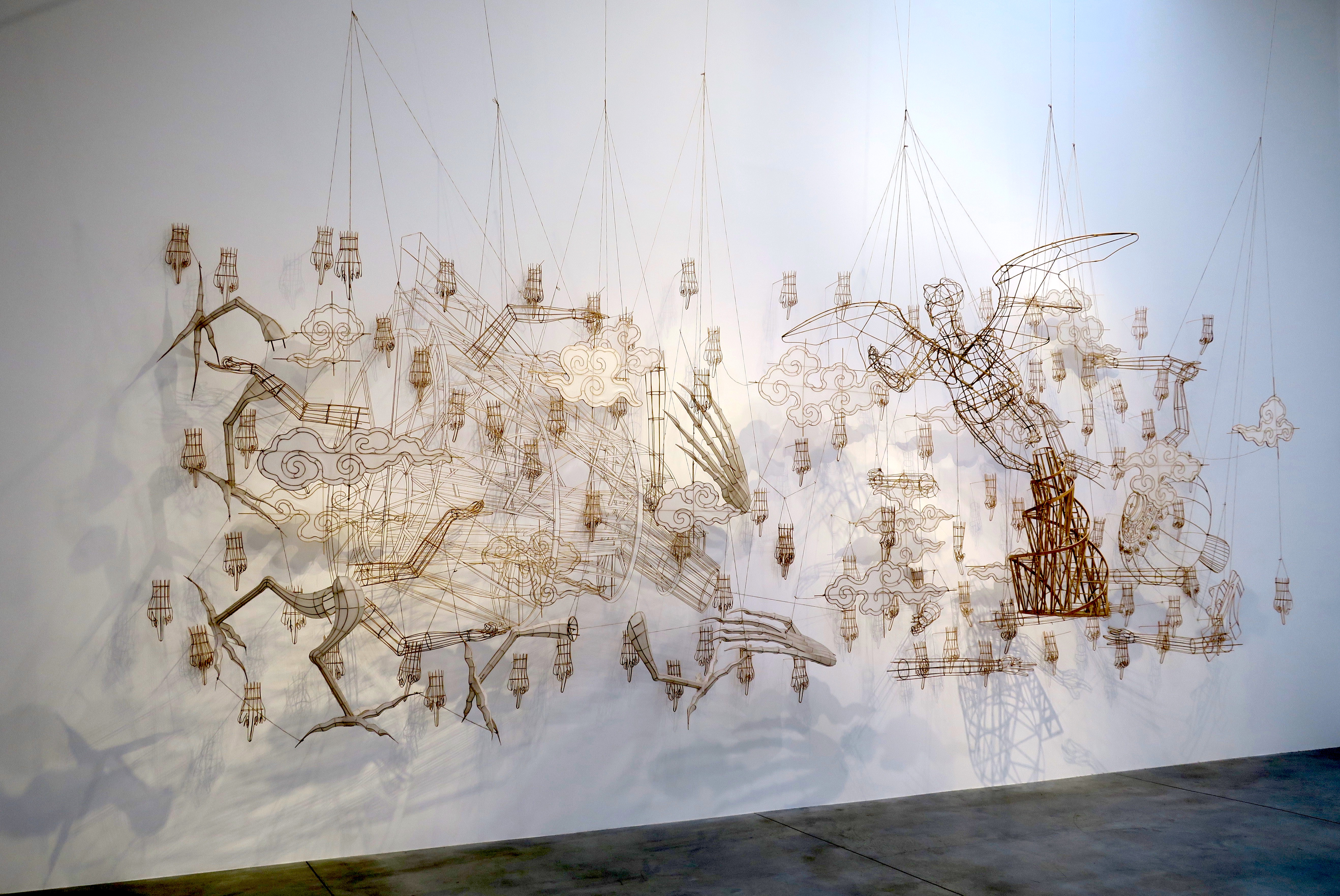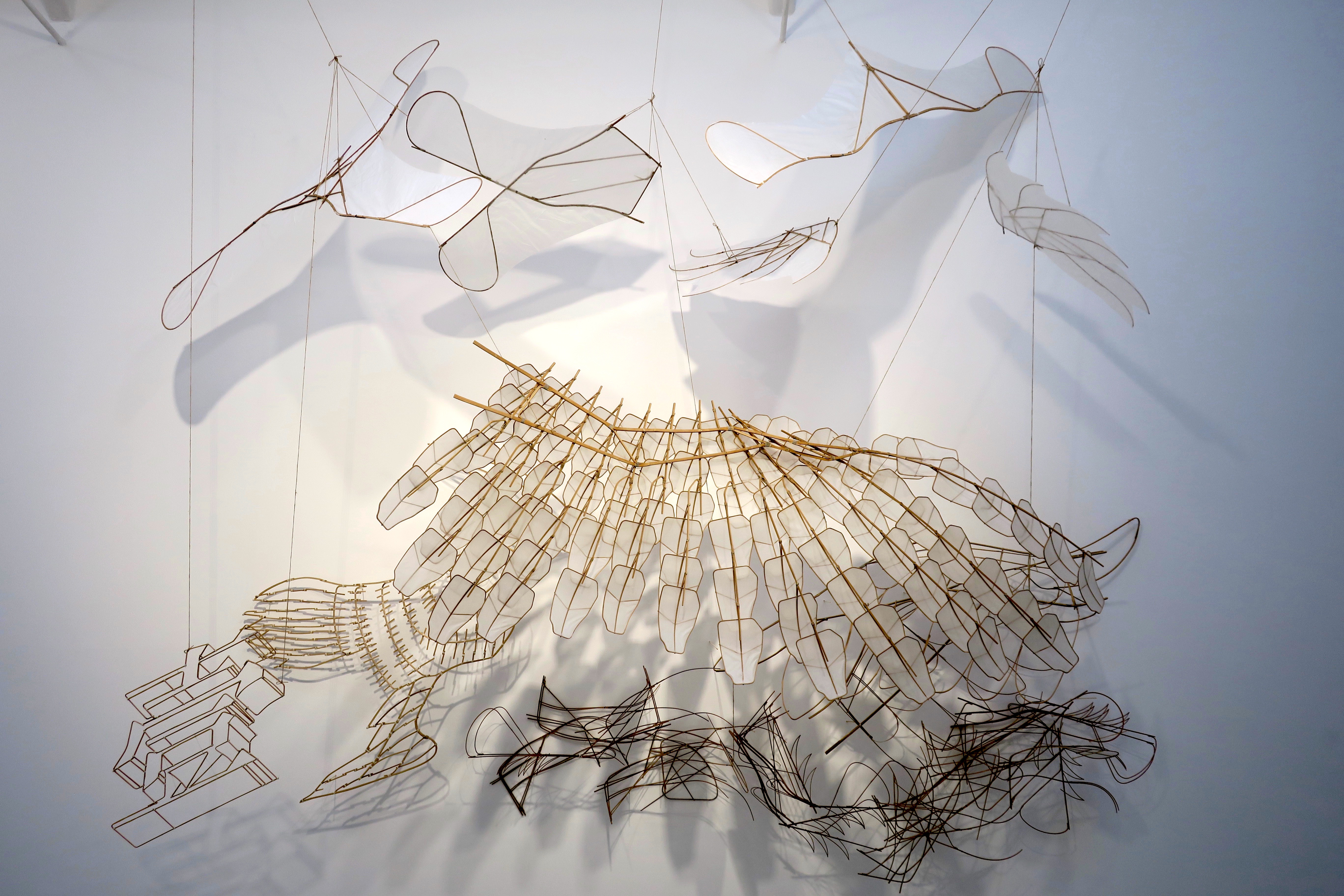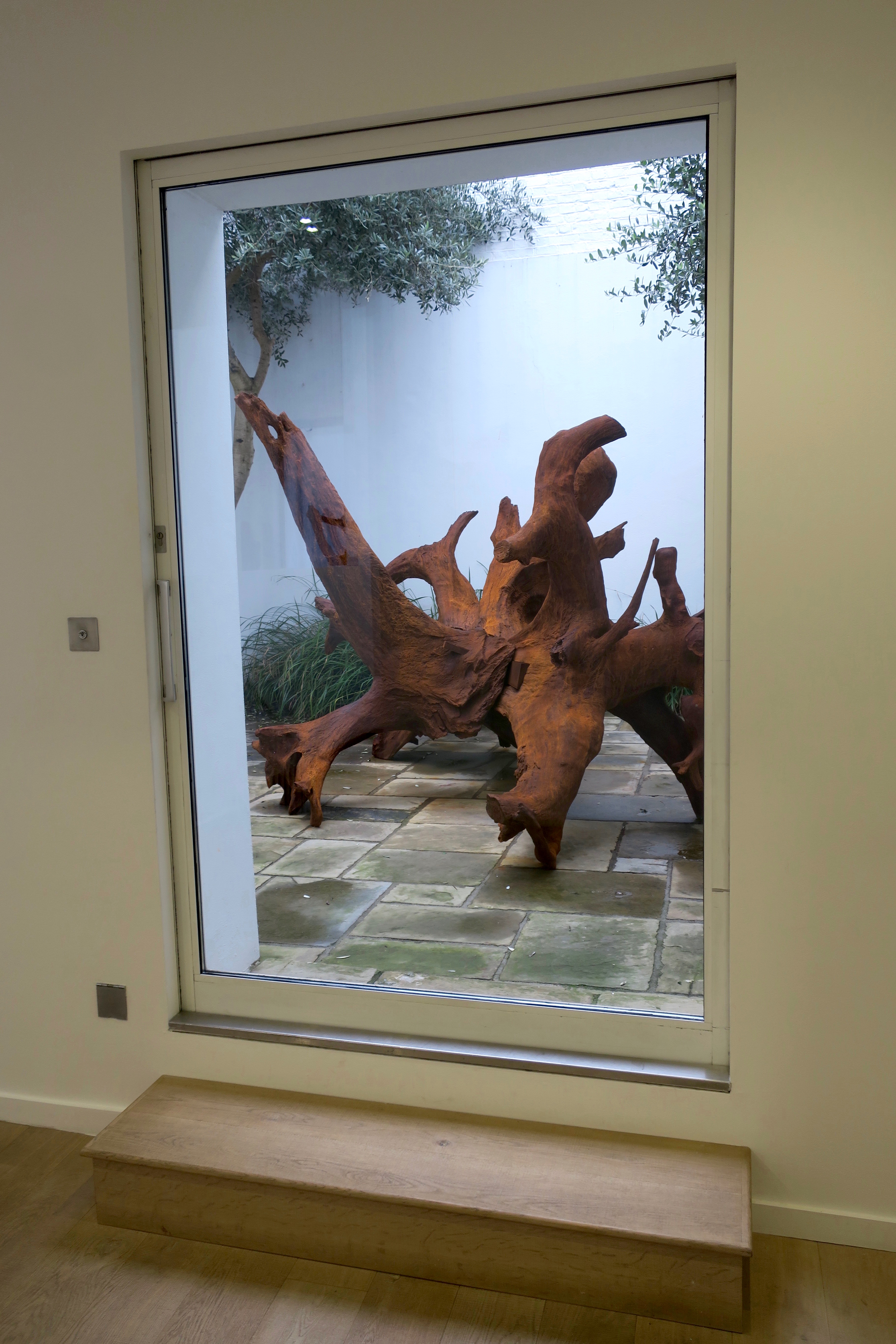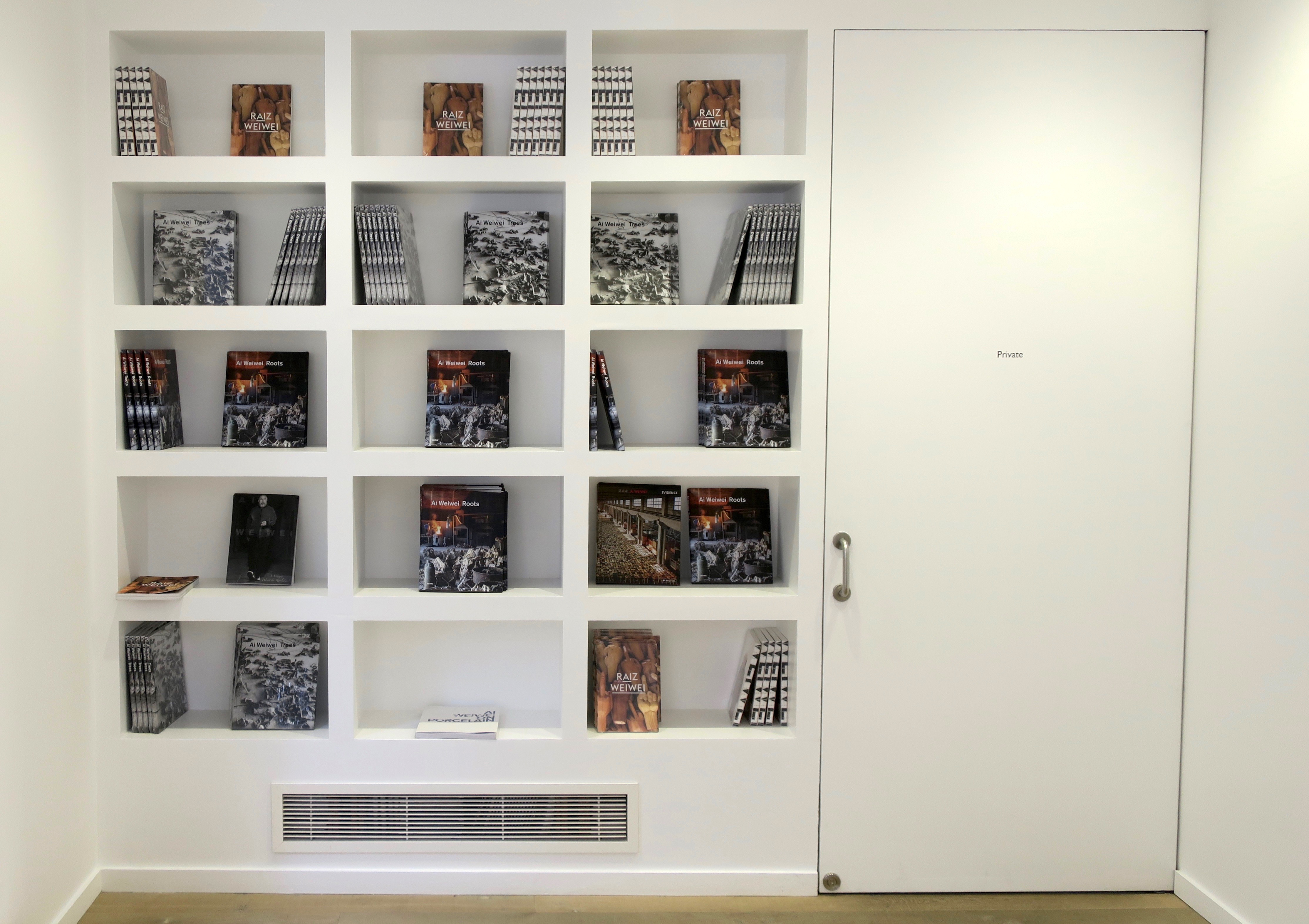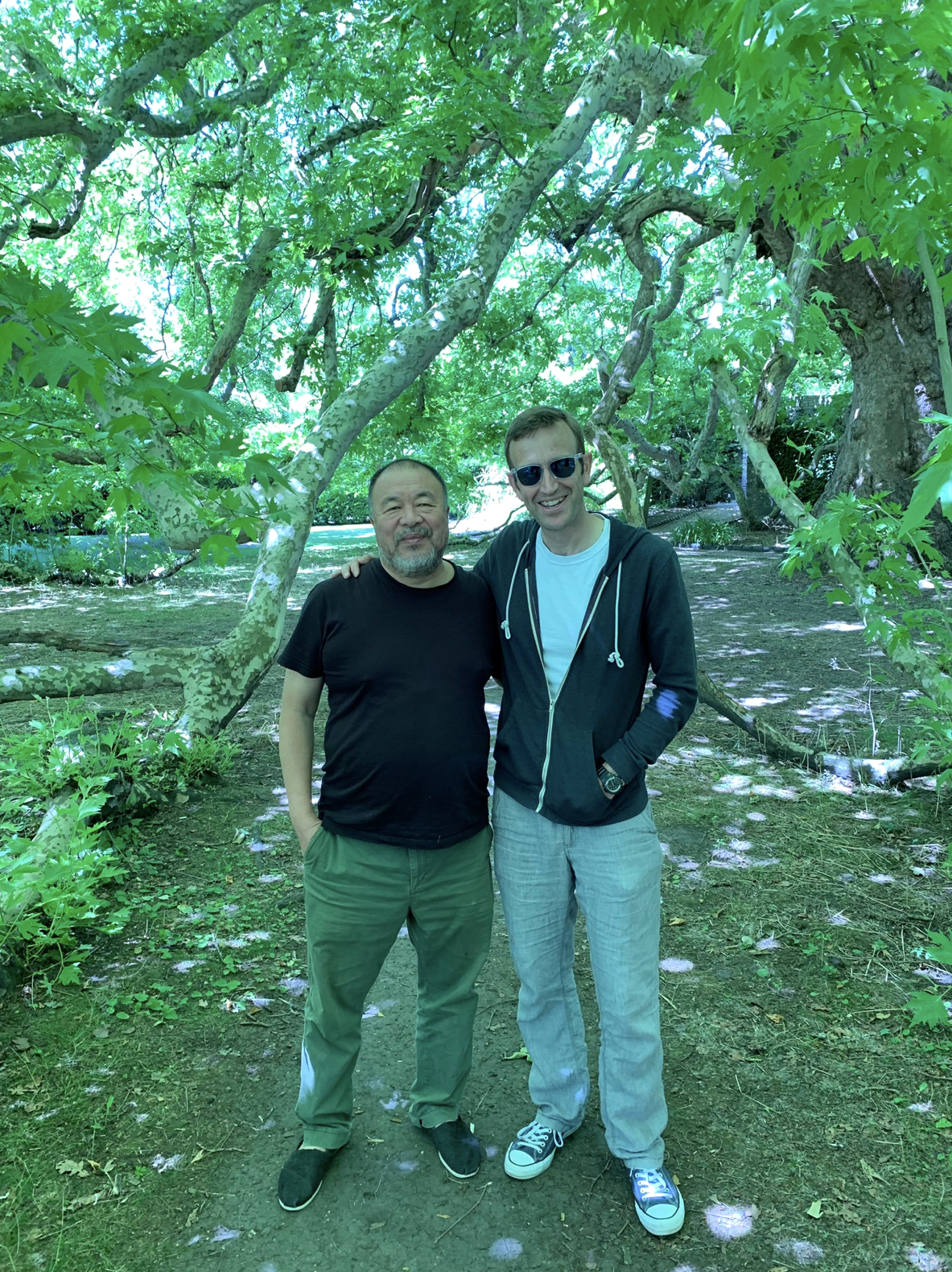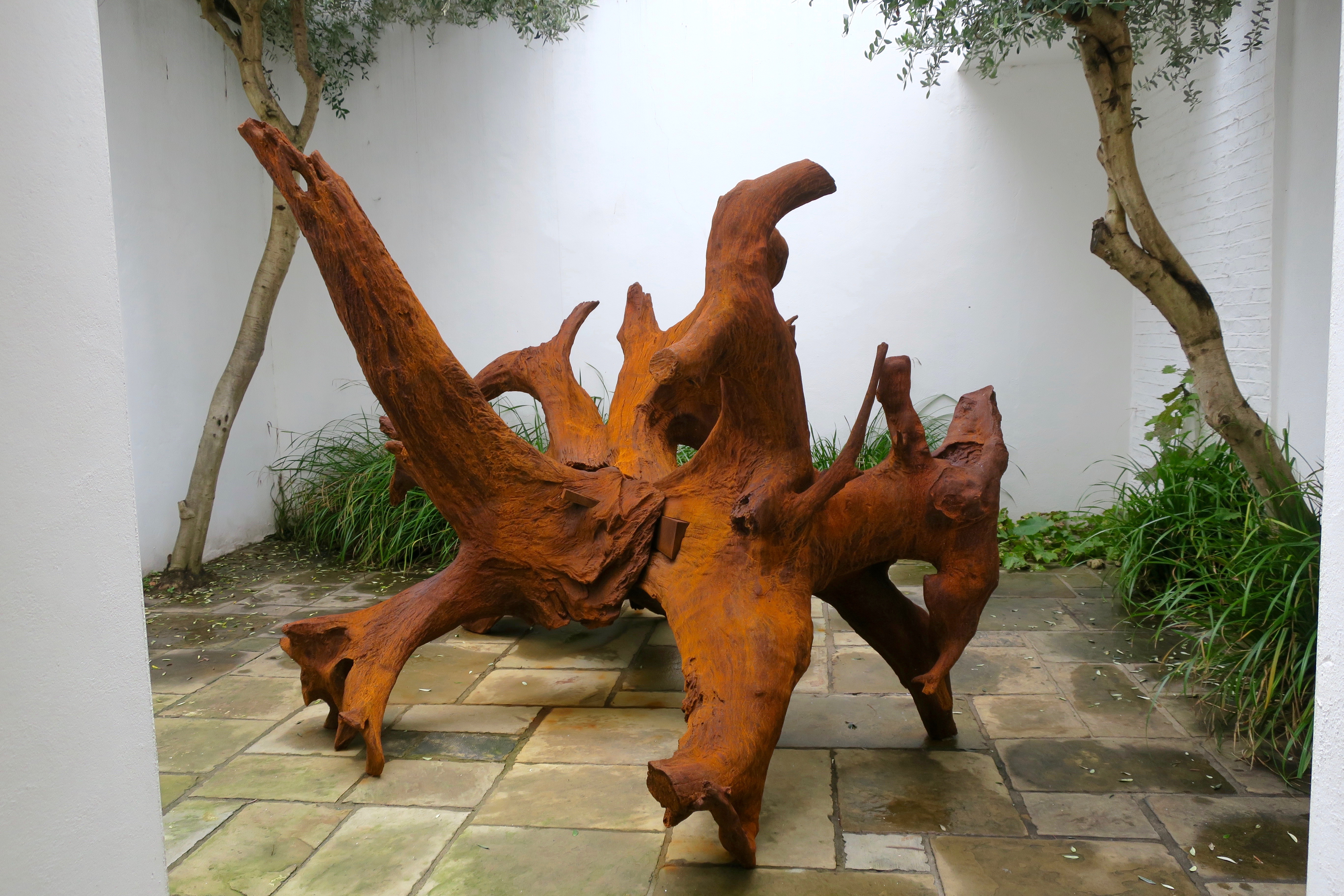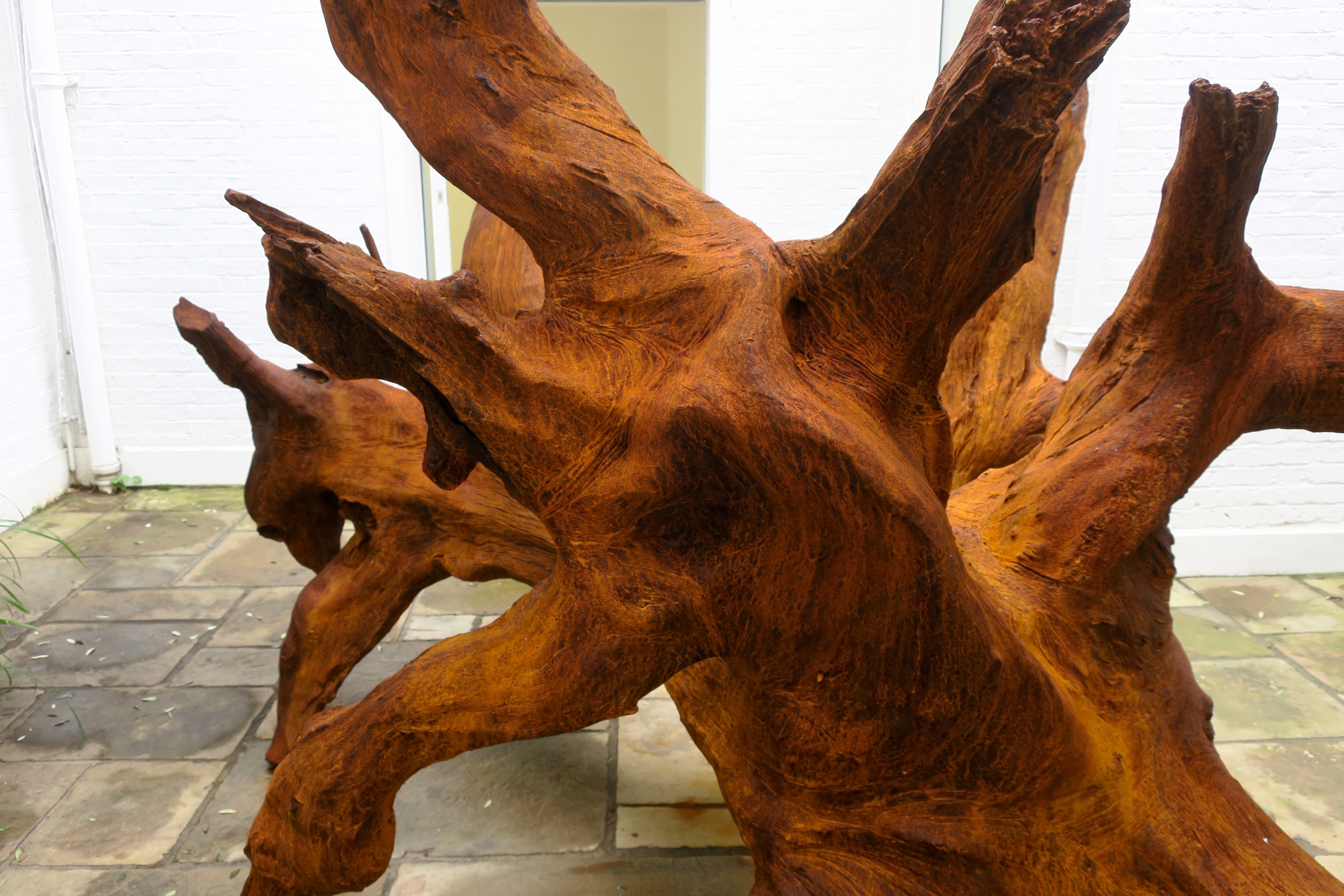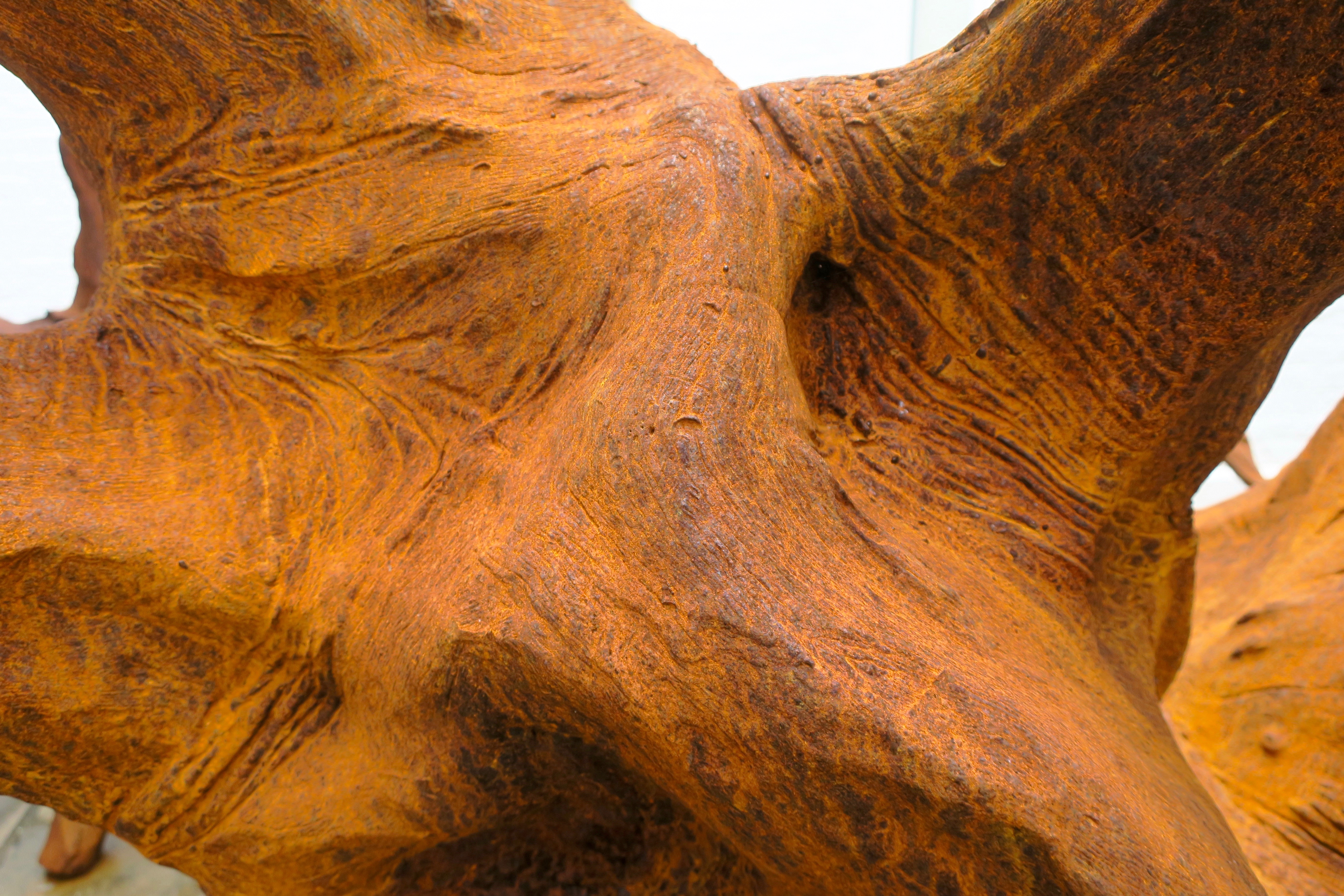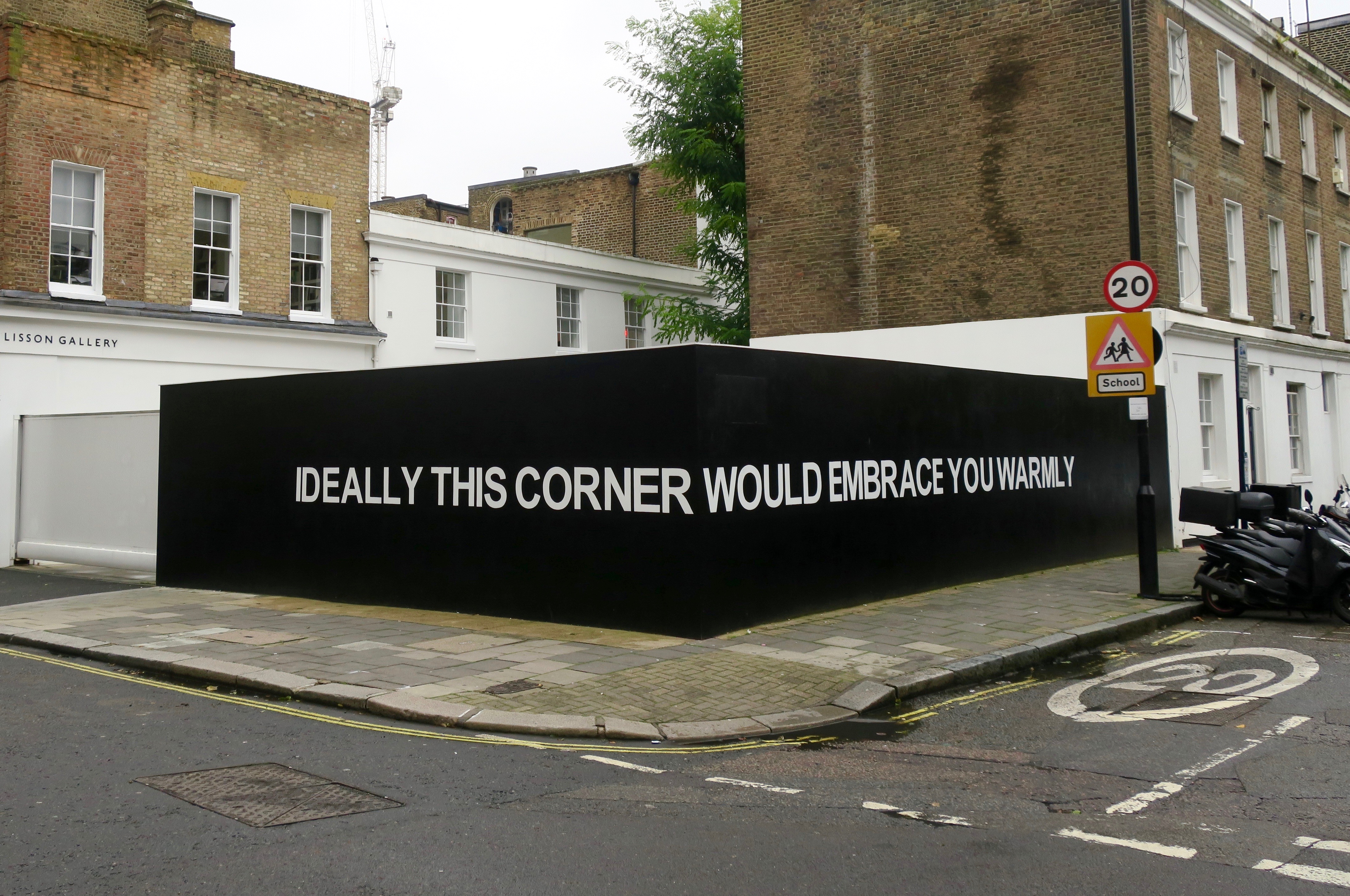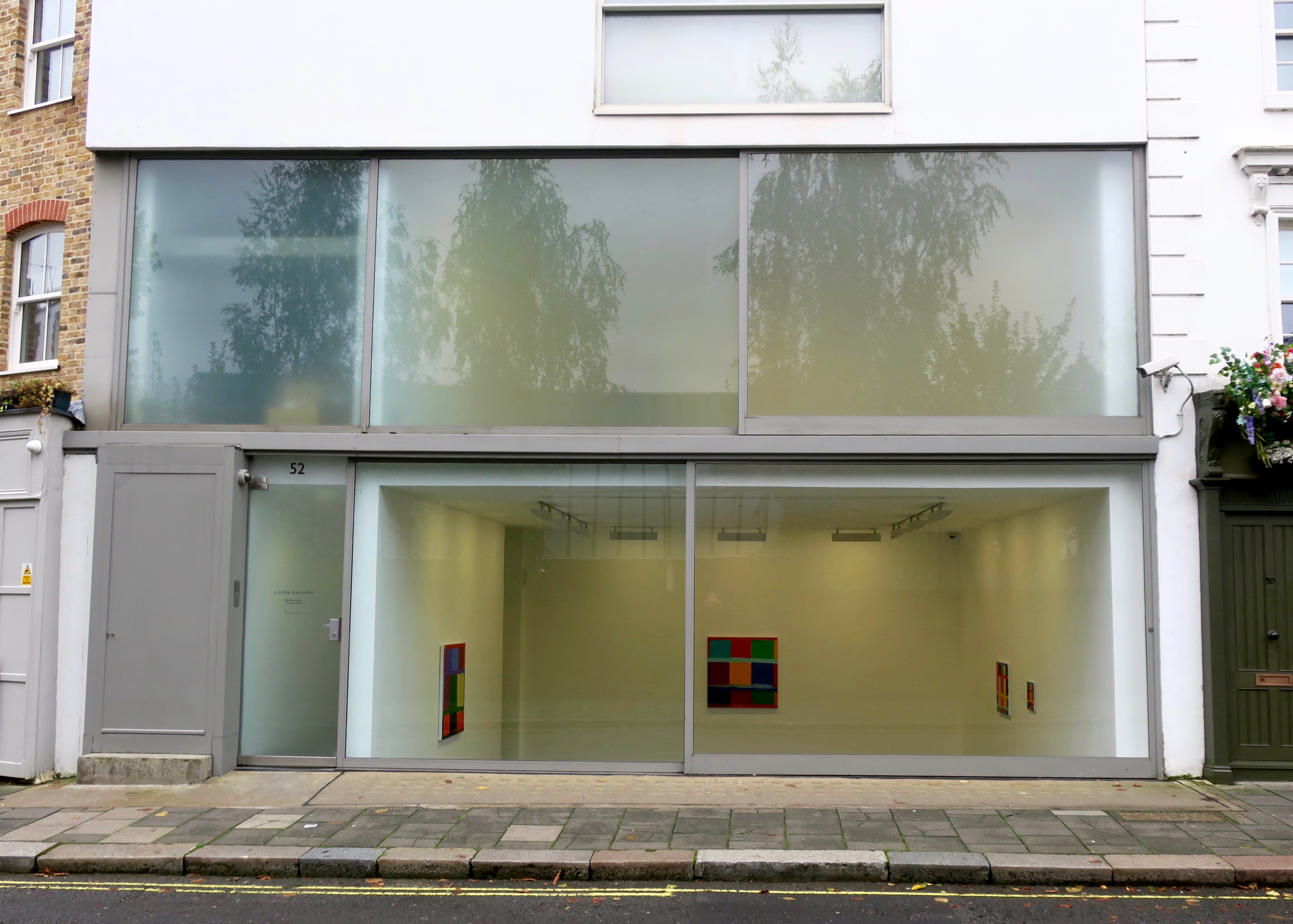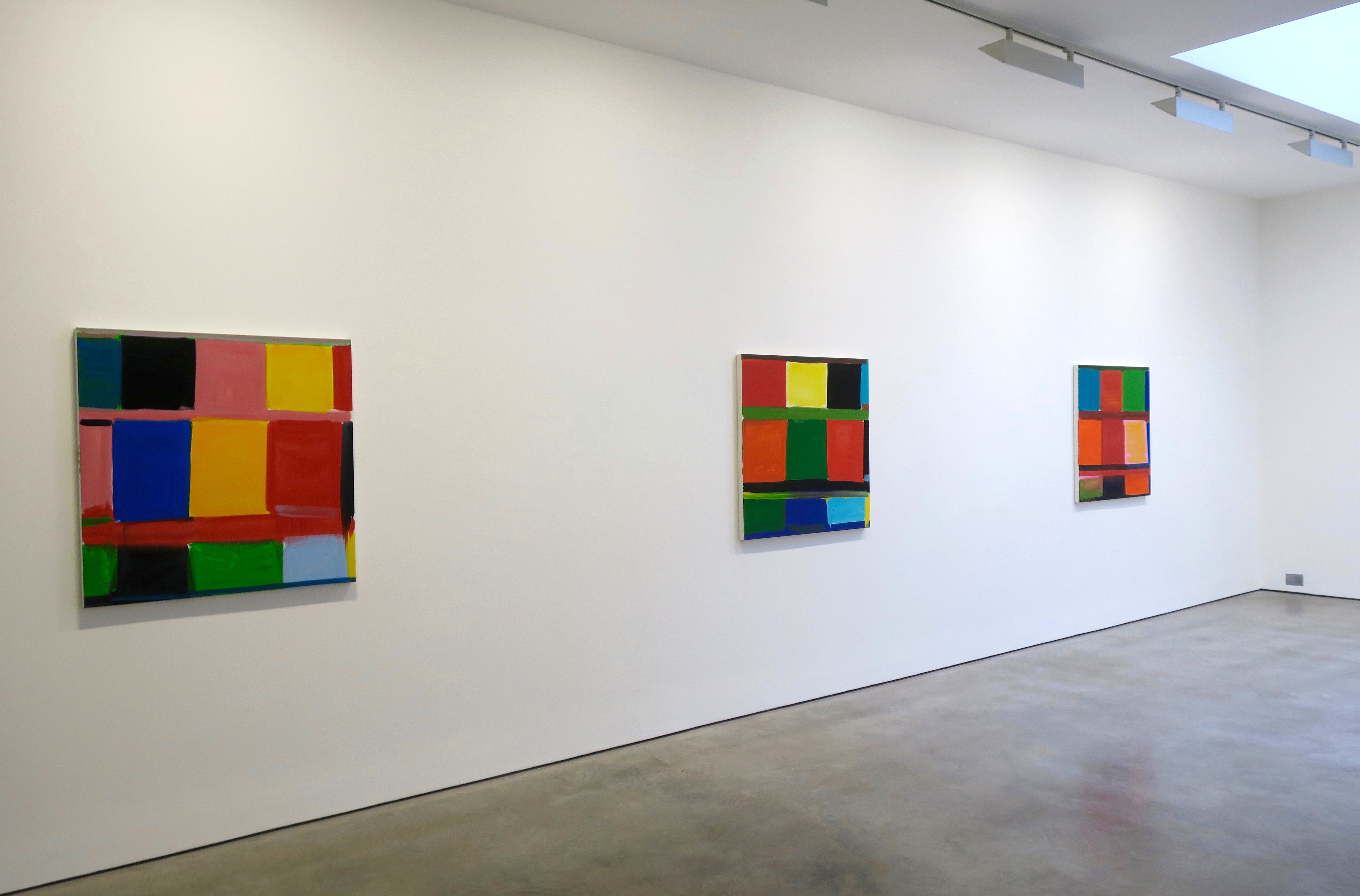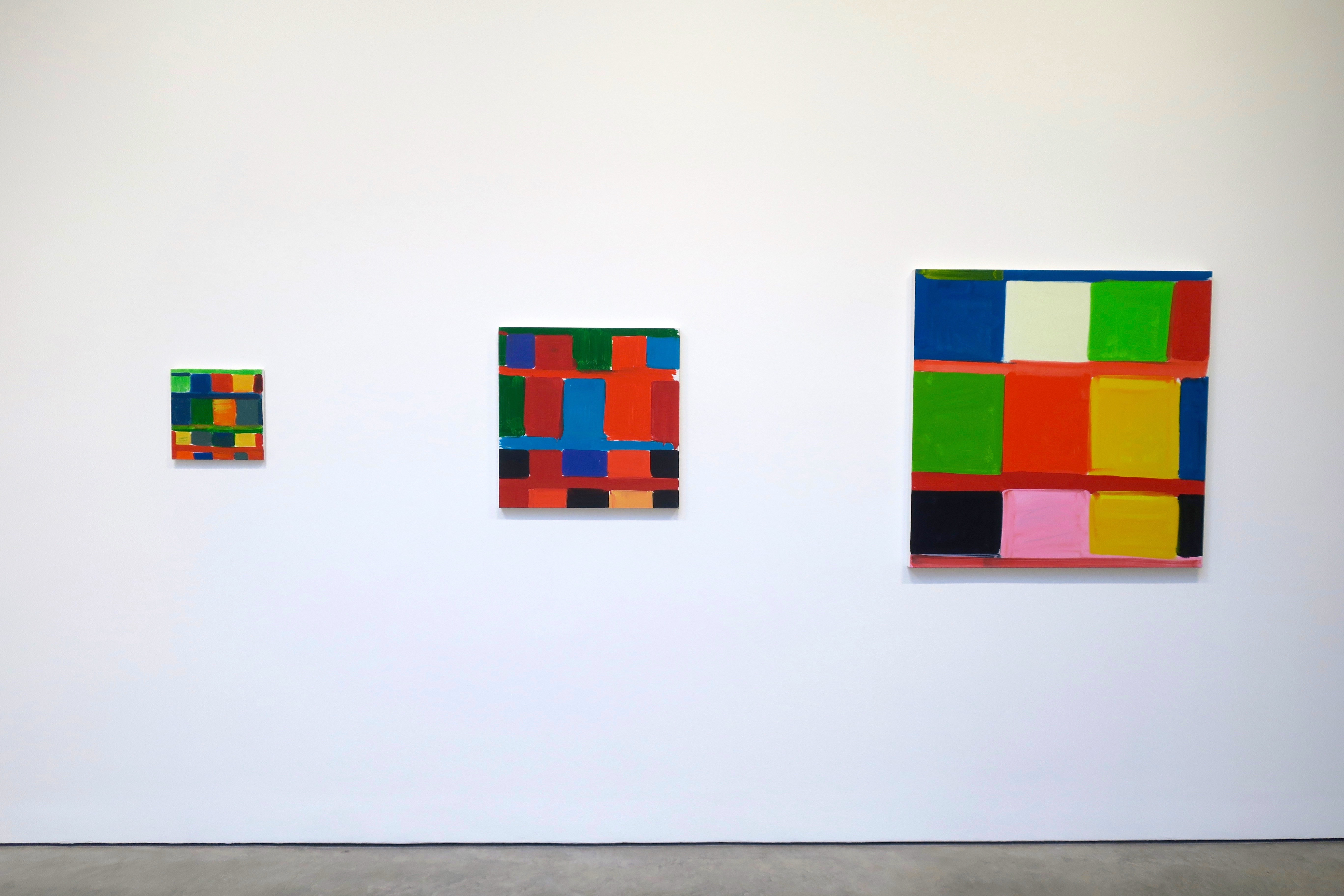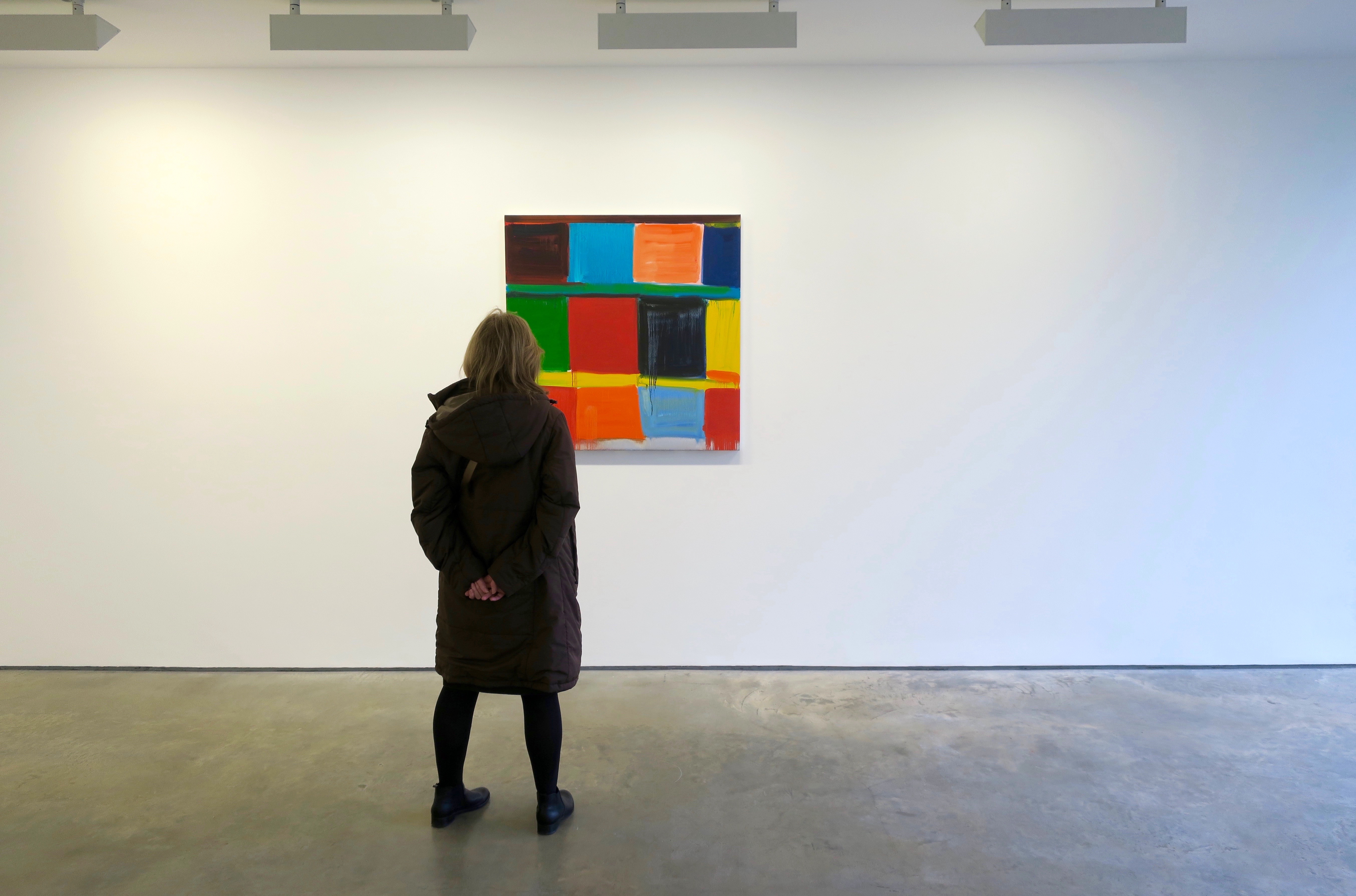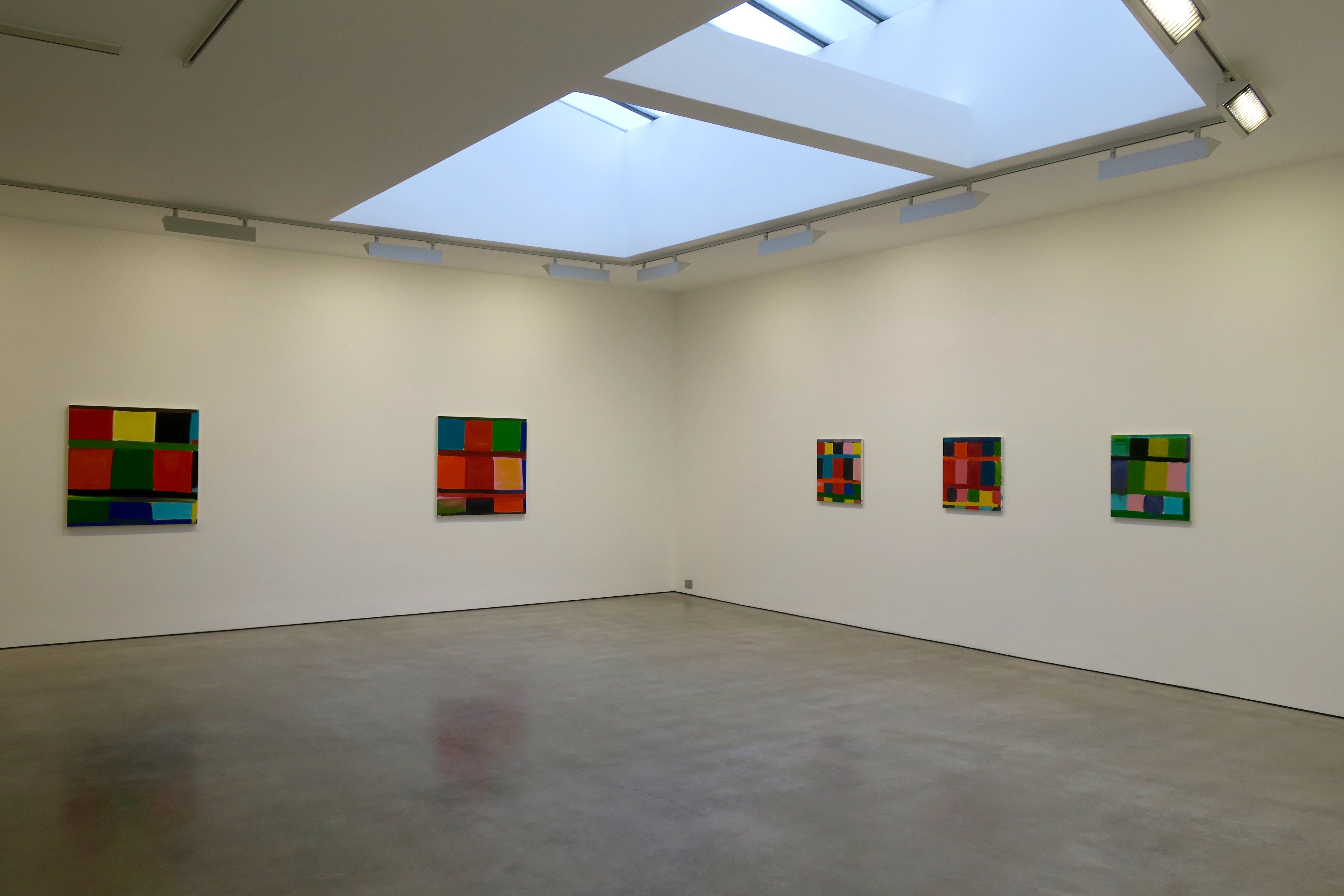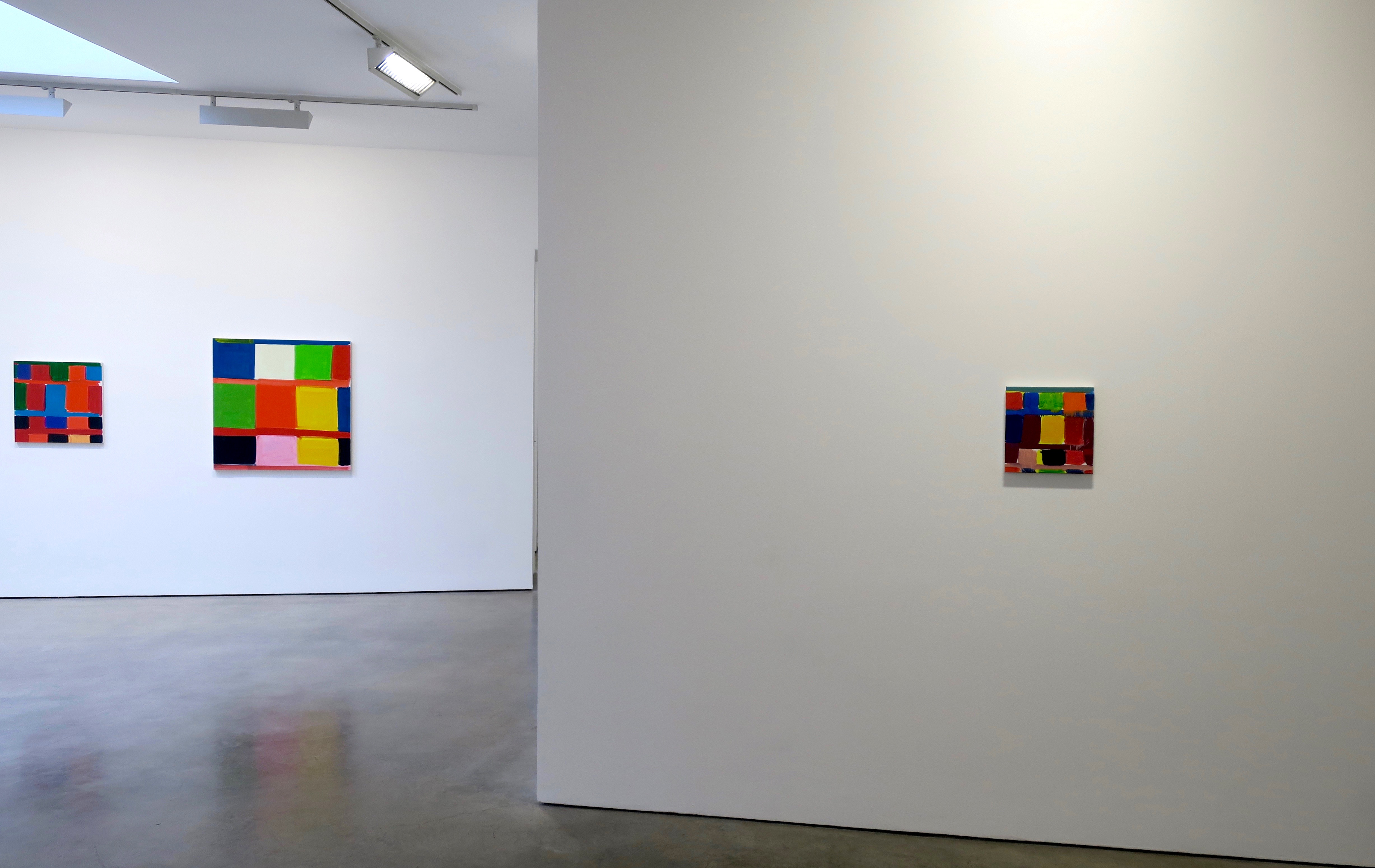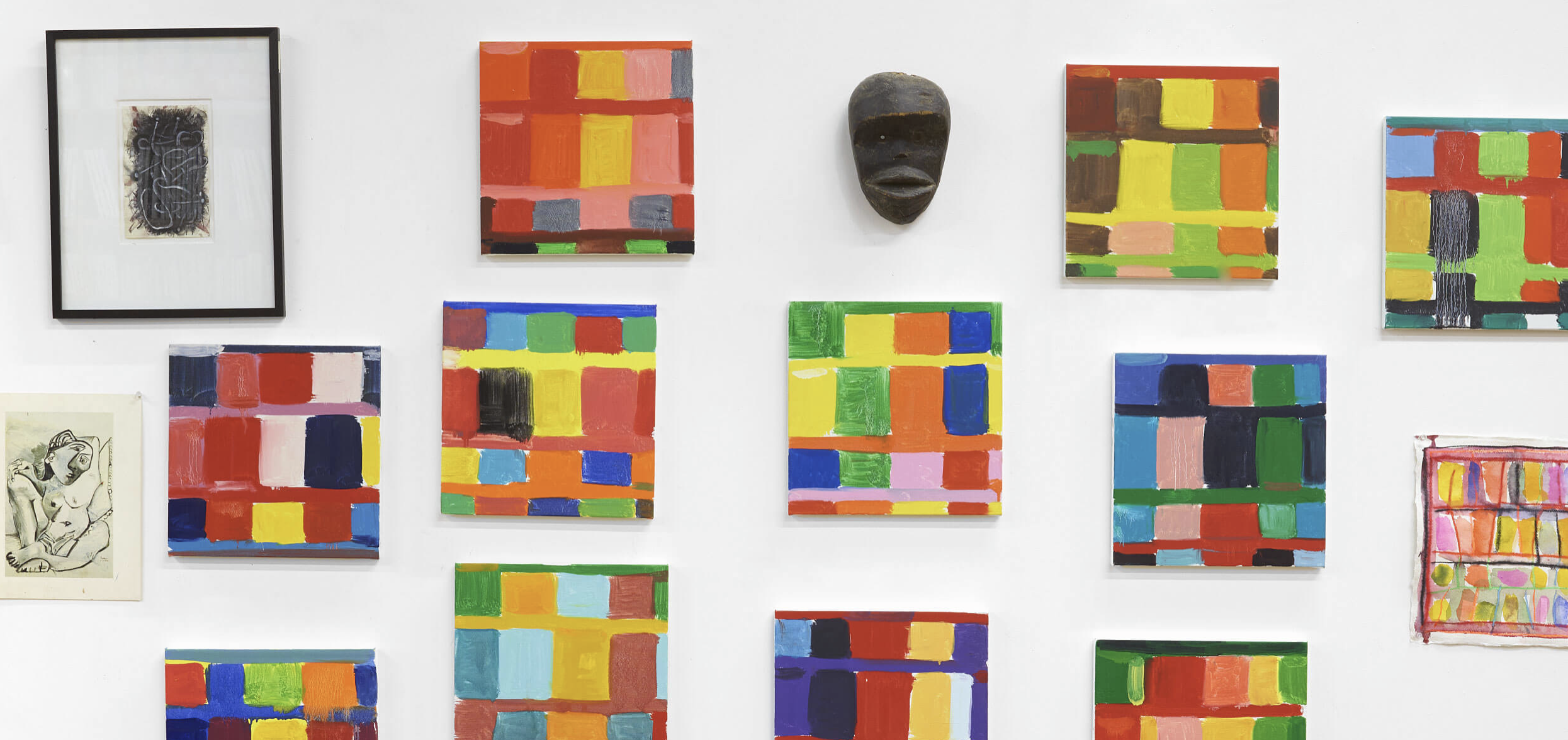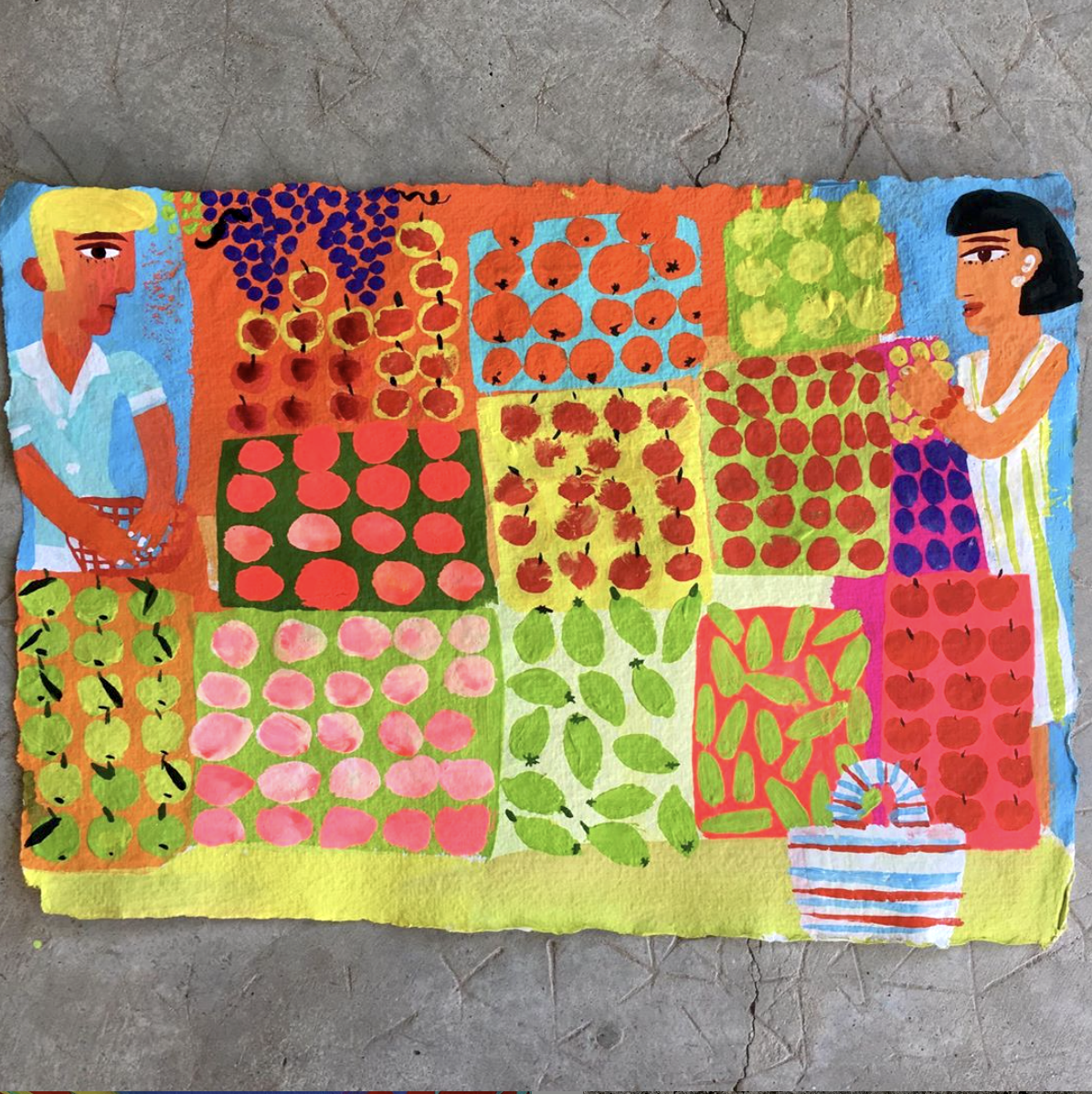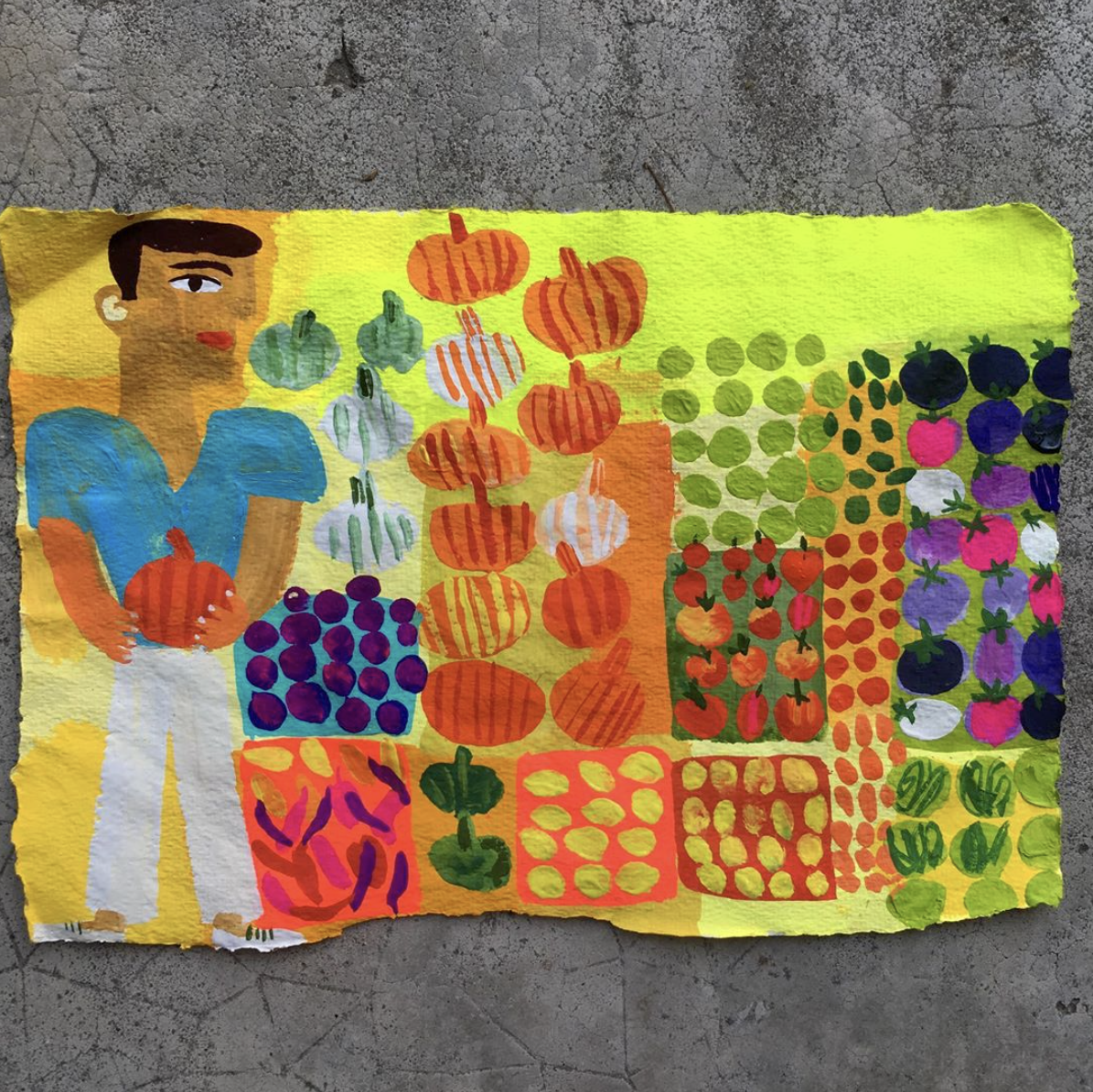The Lisson Gallery at 27 Bell Street in London is presently home to a fascinating and wonderful collection of sculptures by Ai Weiwei, cast iron facsimiles of tree roots grubbed up from the Amazon rainforest even before the latest round of Bolsonaro inspired deforestation wildfires. Melancholy mementos of ancient trees untimely ripped and castaway via traditional Chinese craftsmanship.
A major exhibition by Ai Weiwei this autumn features a new series of monumental sculptural works in iron, cast from giant tree roots sourced in Brazil during research and production for last year’s survey exhibition, ‘Raiz’, at the Oscar Niemeyer-designed OCA Pavilion, Ibirapuera Park, São Paulo.
Ai worked with local artisans and communities across Brazil, visiting Trancoso in the east to locate roots and trunks from the endangered Pequi Vinagreiro tree, typically found in the Bahian rainforest. Elements of these rare tree roots, some of which could be over a thousand years old, were painstakingly moulded, conjoined and then cast to create striking creatures, such as the three- and four-legged works ‘Fly’ and ‘Level’, others including ‘Party’ and ‘Martin’ (all 2019) consist of shattered, exploded root forms radiating outwards from a central nexus. The titles all came as suggestions from Ai Weiwei’s young son Ai Lao, based on his personal observations or connections made when visiting these tree remains with his father, adding to the sense of surreal displacement and alien disjointedness in the exhibition. This incongruous atmosphere speaks further of the works’ depiction of the state of ‘uprootedness’, one that mirrors not only the artist’s peripatetic existence after being allowed to leave China in 2015, but also the plight of the refugees he has spent the last few years documenting, as well as the various indigenous populations that rely on the trees and forests of Brazil for their habitats and sustenance. The deforestation and concomitant purge of peoples and resources relates to previous bodies of work produced by Ai and to the current political realities of many countries, including his native China.
The material employed in making the ‘Roots’ series – cast iron covered in a patina of orange rust – likewise responds to ancient cultures and man’s first tools for tree felling and woodworking, rather than to the recent, more polite art history of bronze or steel sculpture. Although originally contorted by their surrounding landscapes, these roots were not born of nature but made and crafted by human hands, using the ancient techniques of ‘lost wax’ moulding and then iron casting. These methods represent a traditional, largely bygone way of life that has been usurped and upended by industrialisation and relentless modernisation, illustrating how progress can often come at the expense of cultural and societal well-being.
Contrasting with these heavy, land-bound creatures is a number of floating figures, clouds and dream-like vignettes. Ai has been producing delicate sculptures from stretched silk over bamboo armatures for the past five years, employing a group of Chinese kite makers based in Weifang, a city in Shandong province. Purported to have been invented in China around 500 BC by a carpenter and a philosopher, the kite has held many functions throughout history from measuring distances or wind speed, to communication and military usage. Ai’s kites refer back to a mythological encyclopaedia of monsters and creatures known as ‘Shan Hai Jing’ (the ‘Classic of Mountains and Seas’) that also pre-dated Christianity, which depicts fantastical hybrids of chimera, gorgons, unicorns, dragons and griffins. Alongside this bestiary, Ai has added personal and childhood symbols, as well as references back to his own works – ‘Surveillance Camera’ and his one-fingered salutes, the ‘Study of Perspective’ series – and those of his influences, including Marcel Duchamp and Vladimir Tatlin.
There’s a book, Ai Weiwei Roots, to accompany the exhibition, with an essay by Robert Macfarlane entitled The Roots Reach Out. It begins with a poem written in 1940 by Ai Weiwei’s father, Ai Qing.
Trees
One tree, another tree,
Each standing alone and erect
The wind and air
Tell their distance apart
But beneath the cover of earth
Their roots reach out
And at depths that cannot be seen
The roots of the trees intertwine
With hindsight it’s a remarkably prescient poem, and seems to point to the discovery, almost sixty years later in Vancouver, of the mycorrhizal network of roots and fungi by Suzanne Simard.
I also like the essay for Robert’s description of his favourite tree, and for sharing it with Ai Weiwei.
It is vast – about 75 feet tall – and off its twenty-foot-diameter trunk come fifteen or so main radial branches, and off those radial branches come hundreds of secondaries, off which come thousands of tertiaries… together comprising miles of tree. Each of the plane’s big branches makes a distinctive and prolonged route through the air. There are branches whose forms remind me of lightning bolts, of falling ticker tape, of corkscrews and water ripples, lines of bird flight and of crooked arms. Paul Klee would have approved of this tree, for it takes lines for walks with vivid invention. The plane also confounds conventional categories of distinction or separation, for where its great branches reach down to and touch the earth, they transform into roots, diving down into the soil in search of water and nutrients, further powering the tree’s hectic growth, before surging up again to form autonomous offspring trees that are nevertheless still connected to the “mother” trunk.
And I remembered this photo from Twitter
I introduced a remarkable person (Ai Weiwei) to a remarkable tree (the Great Oriental Plane Tree) this afternoon. Unsurprisingly, they got on very well. “It is a family”, said AWW on entering the tree’s green-gold space; just so, a branching, rooting, tangled entity.
At first sight I thought this LEGO drawing was a depiction of the sculpture beside it. But in fact it shows the back and forth trajectory of a refugee boat in the Mediterranean that was refused landing at Lampedusa and turned away. Both drawing and sculpture can be read as depictions of uprootedness.
Illumination, a huge floor-to-ceiling selfie rendered in LEGO bricks.
Roots, a short video to accompany the exhibition.
Ai Weiwei: Roots
Lisson Gallery, 2 October – 2 November 2019
※
Back outside and a painted wall by Laure Prouvost.
※
Further down Bell Street, at No.52, another Lisson Gallery, this one filled with bright paintings.
But that’s the back door. The entrance is around the corner at 67 Lisson Street.
It’s an exhibition by Stanley Whitney called Afternoon Paintings, and on such a dismal grey day as today this feels like the perfect place to get a sunshine shot of Vitamin D.
In his studio, surrounded by a carnival of colours, reds, oranges, blues, purples, grays, Whitney says, “I don’t take colour for granted.” The world is in colour, and people do – I do – forget it. A majority see in colour, so when presented with black and white, Franz Kline’s paintings, say, or a black and white photograph by Rosalind Fox Solomon, colour’s absence is obvious, palpable and no longer taken for granted. In these ‘Afternoon Paintings’, there’s usually one black square or rectangle settled into the composition, on a row at the top or at the bottom or to the side, usually not in the middle. Whitney tells me he sees the darker colours as creating more weight, a kind of gravity: “I don’t worry about what the colour does. If it feels right, if it sits right… To me, it’s all about how things feel. I never know what the colours are going to be… I’m trying to open up space, for people to wander.”
Lynne Tillman, Afternoon Paintings
And so we wander from room to room, bouncing from colour to colour, each painting a joyful box of delights, self-contained but also calling and responding to all the other paintings around it.
Central to Stanley Whitney’s approach to painting is the process. To create his signature style – stacked irregular rectangles of colour within a square format canvas – he works in a sequential manner. The exhibition at Lisson Gallery will include a selection of 12-inch, 24-inch and 40-inch square size paintings, which retain the same line-up of four rows containing between five to seven colours in each band. Using the parameters and refined structure he establishes by moving methodically from square to square, row to row, left to right, top to bottom, Whitney opens the possibility for ‘call and response’ between each passage. Deeply inspired by music, his paintings lend themselves to a similar compositional integrity as that of sheet music. Each painting is a score, each row is a ledger line and each colour is a note, which, based on their sequencing and juxtaposition, combine to create a unique melody. Thus, while the format and colours may show a degree of consistency, their execution always varies, much like how each musician plays the same sheet with their own singular timbre.
The importance of this spontaneous dialogue between the colours also means Whitney moves fluidly between the rectangles, omitting time for overanalysing or judgement. He had noted, “I have to let the colour take me wherever it takes me… The idea is that colour cannot be controlled and that it has total freedom.” As such, when Whitney begins a painting session in the morning, he often finishes work on his large-scale paintings by midday. The act of finishing up any paints leftover in the studio is an instinctual process which allows Whitney to work intensively on these different sized canvases, echoing the rhythms and colours derived from the previous painting session, only now remixed and recalibrate by experience and a new freedom of gesture in smaller format. Apart from their informality and spontaneous nature – involving fewer layers and less overpainting than Whitney’s large compositions – these works reveal Whitney’s dedication to his ‘practice’, which he likens to athletic training or the ‘wood-shedding’ that jazz musicians refer to when describing time spent honing their improvisatory skills behind closed doors.
Stanley Whitney: Afternoon Paintings
Lisson Gallery, 2 October – 2 November 2019
※
And I remember the last time I saw Stanley Whitney’s paintings. It was an exhibition called Radical Times of similarly exuberant paintings, though they were all much larger, and their colourful blocks had recalled the colour filled boxes of fruit and vegetables around the corner in Church Street Market. This time I didn’t come via the market, but by a nice coincidence there was a box of fruit & veg from Christopher Corr waiting for me when I returned to the Rowley Gallery…



